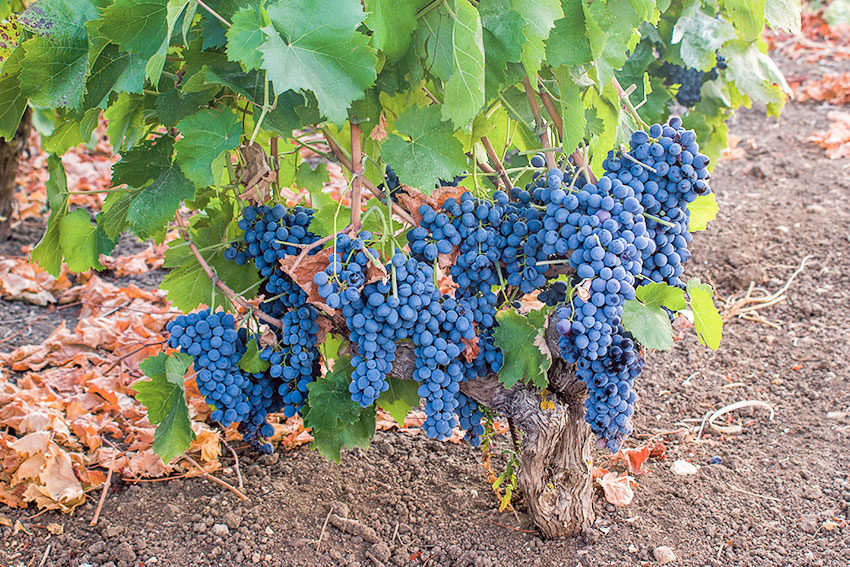Nero goes from zero to hero

After a 500-year training camp in Sicily, you’d think nero d’Avola would’ve been match-fit when it hit Australian shores nearly two decades ago. In fact, the grape variety has taken a little time to find its feet.
Preceded by some of the better-known grapes of Italy and Spain – notably sangiovese, tempranillo, nebbiolo and barbera – nero d’Avola was among a second string of Mediterranean varieties to audition for a role in Australia’s increasingly uninhibited 21st century wine industry. Some of the interest in southerly Italian varieties relates specifically to their indifference to heat – given Australia’s baking summers, iffy water supplies and warming climate, it makes excellent sense to find new grapes with a natural ability to thrive in hot, dry conditions. The late-maturing nero excels in this regard and has even revealed a remarkable ability to “hold its breath”, shutting down the stomates of its leaves in extreme heat to prevent dehydration.
Part of an imported coterie of compatriots such as anglianico, montepulciano, negroamaro and sagrantino, the indigenous Sicilian “black” grape, which is named for one of Italy’s southern-most towns, first stepped into the glare of the Australian sun in 2001.
While the grape’s innate heat tolerance has an obvious appeal to broadacre, inland growers along the Murray and the Murrumbidgee, the growing enthusiasm for emergent varieties also saw it taken up for trials in regions such as Beechworth, Heathcote and the Pyrenees in Victoria, and locally in McLaren Vale, the Adelaide Hills, the Barossa and Clare.
It was Caj Amadio’s plantings of nero near Kersbrook which caught the eye of Kuitpo-based winemakers Fox Gordon, although proprietor Sam Atkins initially had some doubts about the grape’s suitability. Nero d’Avola’s primary role in its island home is as a source of robust, earthy wines, while Fox Gordon (itself founded only in 2001) sports a portfolio of wines focused on fresh, vibrant fruit flavours, lower-end alcohol and easy drinkability.
“Stylistically, when we were looking at nero and obviously looking at what the Italians were doing, we wanted to stay away from the big, alcoholic, tannic, black wines; they show a dry raisin character we didn’t really want,” Atkins says.
But a regime of earlier picking and maturation in older oak in Fox Gordon’s trial vintages of the wine in 2013 and 2014, run by the company’s former winemaker Tash Mooney, demonstrated another side to the grape. “We saw the cherry and chocolate fruit flavours really come through, so, in a sense, the style really picked itself.”
On release, drinkers loved it, and Fox Gordon’s ‘The Dark Prince’ nero d’Avola has since moved to large format 500-litre barrels, with literally bigger things to come – 1400-litre barrels bought for fiano (another late-ripening Italian) will become home to the nero in a couple of years’ time. “So, it’s all about soft treatment and soft oak, but picking time in the vineyard is critical: leave it too late and the skins give it that tannic character we’re trying to avoid,” Atkins says.
The cool nights of the Adelaide Hills permit longer ‘hang time’ for the grapes and a slow, even ripening that allows picking at the winemaker’s time of choice. In warmer regions, Atkins says, ripening tends to come on with a rush and produces a more earthy, gravelly style.
Critical and popular success for the Dark Prince (including a silver medal in Sydney) has led Fox Gordon to plant two hectares of its own nero vineyards at Kuitpo, which will come into production in the next year or so. While Kuitpo is at the other end of the Adelaide Hills from Kersbrook, the elevation is very similar, and Atkins expects the integration of estate-grown fruit to be seamless. He says because of Kuitpo’s exposure to coastal breezes, the fruit is likely to be a little more floral in character.
Australian drinkers have taken a distinct shine to nero across the board, and cultivation is growing by leaps and bounds. The national crush has doubled in the past few years to reach a total in excess of 950 tonnes. More than 55 Australian wineries are now producing a nero, and other fine local examples emanate from McLaren Vale’s Coriole and Brash Higgins, Hills wineries Unico Zelo and Bird in Hand, and Clare Valley’s Mount Horrocks.
Sam Atkins says that on its merits, nero d’Avola has now assumed a central role in the Fox Gordon range of reds, along with tempranillo and shiraz.
“I love that wine, and I love showing people that wine because it blows them away,” Atkins says.
Header image:
Shutterstock